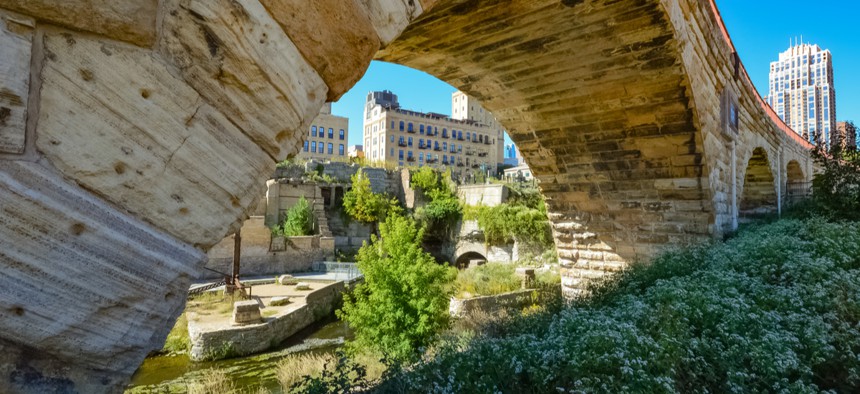A Ranking of City Park Systems—While Parks Are More Important Than Ever

Minneapolis took first in the rankings for the fourth time in five years. Shutterstock

Connecting state and local government leaders
The national index ranks large city park systems on a number of metrics, including how many residents can walk to the nearest one.
Minneapolis has the best city park system in America at a time when residents are increasingly turning to public outdoor space for relief from quarantine, the nonprofit Trust for Public Land found in its 2020 Parkscore Index.
The index, released this week, ranks the country’s largest 100 cities on a variety of park-focused metrics, including median park size, the percent of residents who live within a 10-minute walk of a park and amenities like off-leash dog parks, basketball hoops and restrooms. (Fort Wayne and Indianapolis declined to participate, while Gilbert, Arizona was not ranked due to insufficient data, according to the index.)
Minneapolis regained the top spot for the fourth time in five years, dethroning Washington D.C., which captured the highest ranking in 2019. The city’s score increase was “largely because of new park acquisitions and strategic expansions,” the nonprofit said. D.C. dropped to second, while St. Paul, Minnesota retained its third-place ranking.
“We are honored by the top ranking and recognize how important parks are to all Minneapolis residents, particularly during this national health crisis,” Al Bangoura, superintendent of the Minneapolis Park and Recreation Board, said in a statement. “For years we have used equity tools and metrics in establishing our annual budget, capital improvement budget and recreation programming, and we will continue to do so during this pandemic.”
Those types of measures, along with careful budget planning, will be crucial for parks during the economic downturn that is likely to follow in the wake of the Covid-19 pandemic, officials said. After the 2008 economic crisis, parks budgets across the country were cut by roughly 20%, which slowed expansions and improvements for several years, according to data from the Trust for Public Land.
“While few cities have announced budget plans for 2021 and beyond, park advocates are gearing up for a fight,” Bill Lee, the nonprofit’s senior vice president for policy, advocacy and government relations, said in a statement. “We need our parks, and we will not allow park systems to be collateral damage from the Covid-19 pandemic.”
Arlington, Virginia; Cincinnati, Ohio, Portland, Oregon; Irvine, California; San Francisco, Boston and Chicago round out the top 10. Elsewhere in the rankings, Boise, Idaho (21st overall) defended its title as the best park system for dogs, with six dog parks per 100,000 residents. Irvine, California (4th) had the most basketball hoops, while Madison, Wisconsin (12th) was best for playgrounds. Cleveland (29th) led the nation in park splash pads and other water features.
Nationwide, the number of playgrounds increased by 3.6% in the past year, mostly due to shared-use agreements that allow neighborhood residents to use school playgrounds outside of school hours and on the weekends. The number of dog parks also increased by nearly 4%, according to the index.
But there remain inequities in park access across the country. For example, more than 98% of residents in Minneapolis, Washington D.C. and St. Paul, Minnesota (the top three park systems in this year’s rankings) live within a 10-minute walk of at least one park, compared to just 47% of residents in Charlotte, North Carolina, Mesa, Arizona and Oklahoma City (the three lowest-ranking park systems).
Those disparities, likely to increase if the economy's downturn isn't reversed, are more noticeable now, when thousands of families are quarantined at home without yards or outdoor play spaces.
“Parks are a critical part of health and wellness—reducing anxiety, stress, and depression and improving physical health—all the more necessary during this public health emergency,” Sadiya Muqueeth, the nonprofit’s director of community health, said in a statement. "Sunlight, fresh air, exercise, and access to nature all have a positive effect on our physical health and emotional wellbeing.”
Kate Elizabeth Queram is a Staff Correspondent for Route Fifty and is based in Washington, D.C.

NEXT STORY: Adapting to the new network normal




